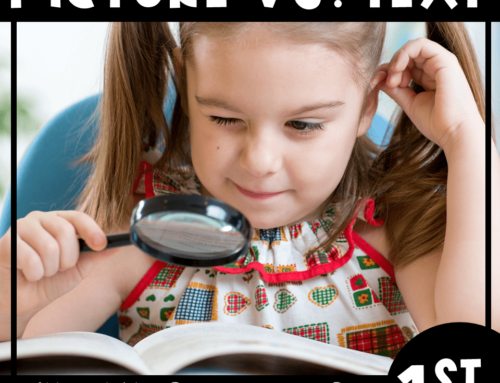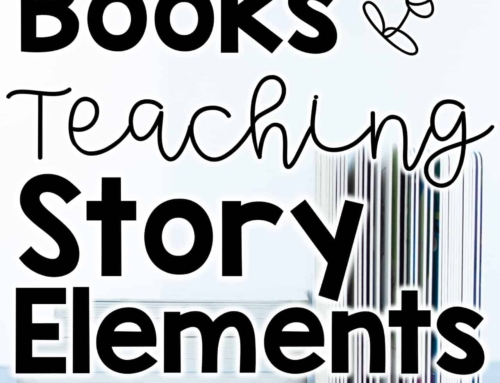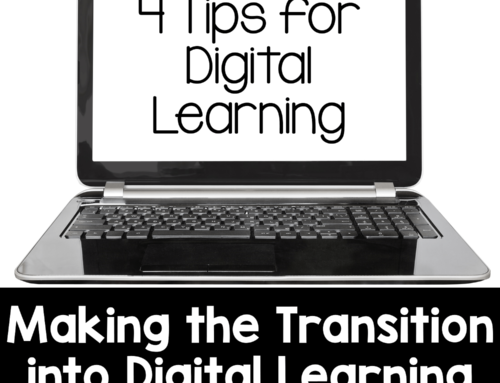Today I have such a simple way to teach context clues. I have done this lesson with 2nd, 3rd, and 4th grade students and it is one of those lessons that is awesome every time. I wish all lessons went that way, don’t you!?!?

It helps that it uses my most favorite classroom tool ever: the post it note. Seriously, what can’t you do with these things?!?!
Pick a book.
 I love to use the book Zomo the Rabbit. Great example of a trickster tale and the vocabulary isn’t too difficult. It is perfect for introducing context clues. I also happened to have a big book version of it! Really, you need a big book in order to do this lesson. The kids have to be able to see the text. To introduce using context clues, I use one of my favorite big books, Zomo the Rabbit by Gerald McDermott. It is perfect to use with second graders or struggling third graders. It also can be tied into the CCS standard RL.2.2 Recount stories, including fables and folktales from diverse cultures, and determine their central message, lesson, or moral.
I love to use the book Zomo the Rabbit. Great example of a trickster tale and the vocabulary isn’t too difficult. It is perfect for introducing context clues. I also happened to have a big book version of it! Really, you need a big book in order to do this lesson. The kids have to be able to see the text. To introduce using context clues, I use one of my favorite big books, Zomo the Rabbit by Gerald McDermott. It is perfect to use with second graders or struggling third graders. It also can be tied into the CCS standard RL.2.2 Recount stories, including fables and folktales from diverse cultures, and determine their central message, lesson, or moral.
Prepare the post it notes.
You can buy the fancy kind or make your own by cutting up a post it note. I am cheap, so I always cut my own ;). The secret sauce to this lesson is cutting MULTIPLE sizes of the post it notes. You will not be using just one post it note per word. This is why is helped to make my own. Cut the post it down to exactly the right size to cover the word. No more, no less. Often, I layered SEVERAL post it notes, so that when the top one was pulled off it revealed only the first few letters. This is a great way to talk about how using ONLY initial letters and sounds to figure out an unknown word isn’t always the most effective strategy.
exactly the right size to cover the word. No more, no less. Often, I layered SEVERAL post it notes, so that when the top one was pulled off it revealed only the first few letters. This is a great way to talk about how using ONLY initial letters and sounds to figure out an unknown word isn’t always the most effective strategy.
Create an anchor chart with students to introduce what using context clues means.
Model, Model, Model
Read aloud the book with students. As you reach a post it covered word, discuss strategies to solve the unknown word. This is a great tie into teaching students to using meaning, structure, and visual cues, as well when figuring out tricky words. Often, I used more than one strip to cover the word. As I pulled a strip off the revealed part of the word, we discussed other strategies to figure out what made sense with what word part what showing. This is where the  power of the lesson is- you could call it your teaching “super power.” Don’t forget to model. Don’t just dive in and ask students to respond yet! SHOW students how to figure out the tricky words first by using a think aloud. After modeling how to find the meaning of a tricky word using context clues, use guiding questions to help students figure out the word.
power of the lesson is- you could call it your teaching “super power.” Don’t forget to model. Don’t just dive in and ask students to respond yet! SHOW students how to figure out the tricky words first by using a think aloud. After modeling how to find the meaning of a tricky word using context clues, use guiding questions to help students figure out the word.
What could some guiding questions for students in this lesson be?
*What word makes sense here?
*Does that word look/ sound like the word you think it is (using initial letters)?
*Is that word long enough (looking all the way through a word) to be the word you think it is?
*Are there any other clues in the sentences around it?
*Let’s try a synonym for that word and see if it makes sense. What could a synonym be? Does it make sense?
* Then, move to discussing the tricky word with a partner. It is a process and you may have to repeat it many times because it is such a hard skill for many students.
This lesson always got a LOT of bang for my buck: context clues, decoding strategies, checking for meaning…the list goes on and on. It was also pretty interactive and fun :). That is a nice touch!! Do you have any tips for teaching context clues?
Mandy Gregory is a 2007 and 2012 Teacher of the Year. She has taught Kindergarten- 4th grades in both the general education and inclusion settings. She is currently a 1st grade Special Education teacher. She is the owner and creator of Mandy’s Tips for Teachers website (www.mandystipsforteachers.com) and has over 13 years of teaching experience. She is married with two beautiful children.







Great idea! Thanks so much! I'm your newest follower!
Kelli
Tales of a Teacher
Love this idea!! We use nonsense words sometimes to get them to really use the context clues so this is perfect to cover them!!! It will take their focus off the fact they don't know the word to using the context clues!! 🙂
Nicole
All Things Apple in 2nd
This is awesome! I will def try this as a think aloud to introduce context clues next year– thank you!
Aylin
Learning to the Core
Great idea! Love it!
Nicole
Love this idea…now I'm off to see if I can get this book. 🙂
♬Mrs. Samuelson's Swamp Frogs ♬